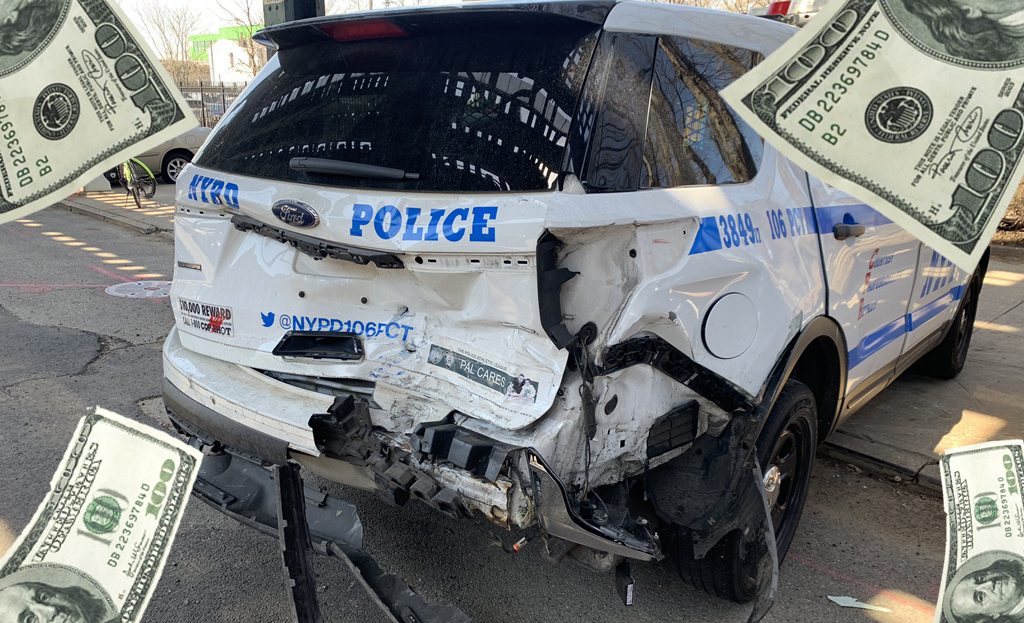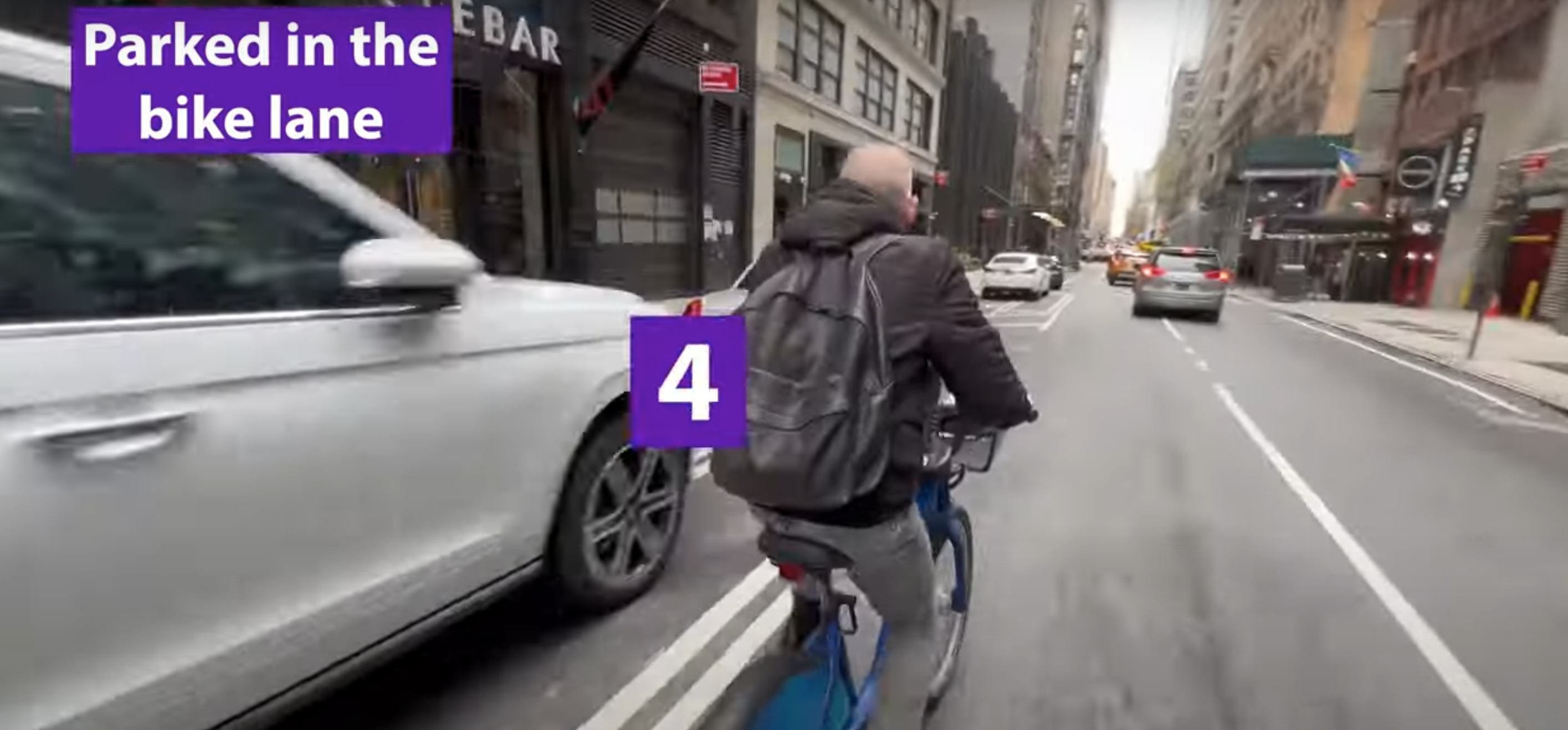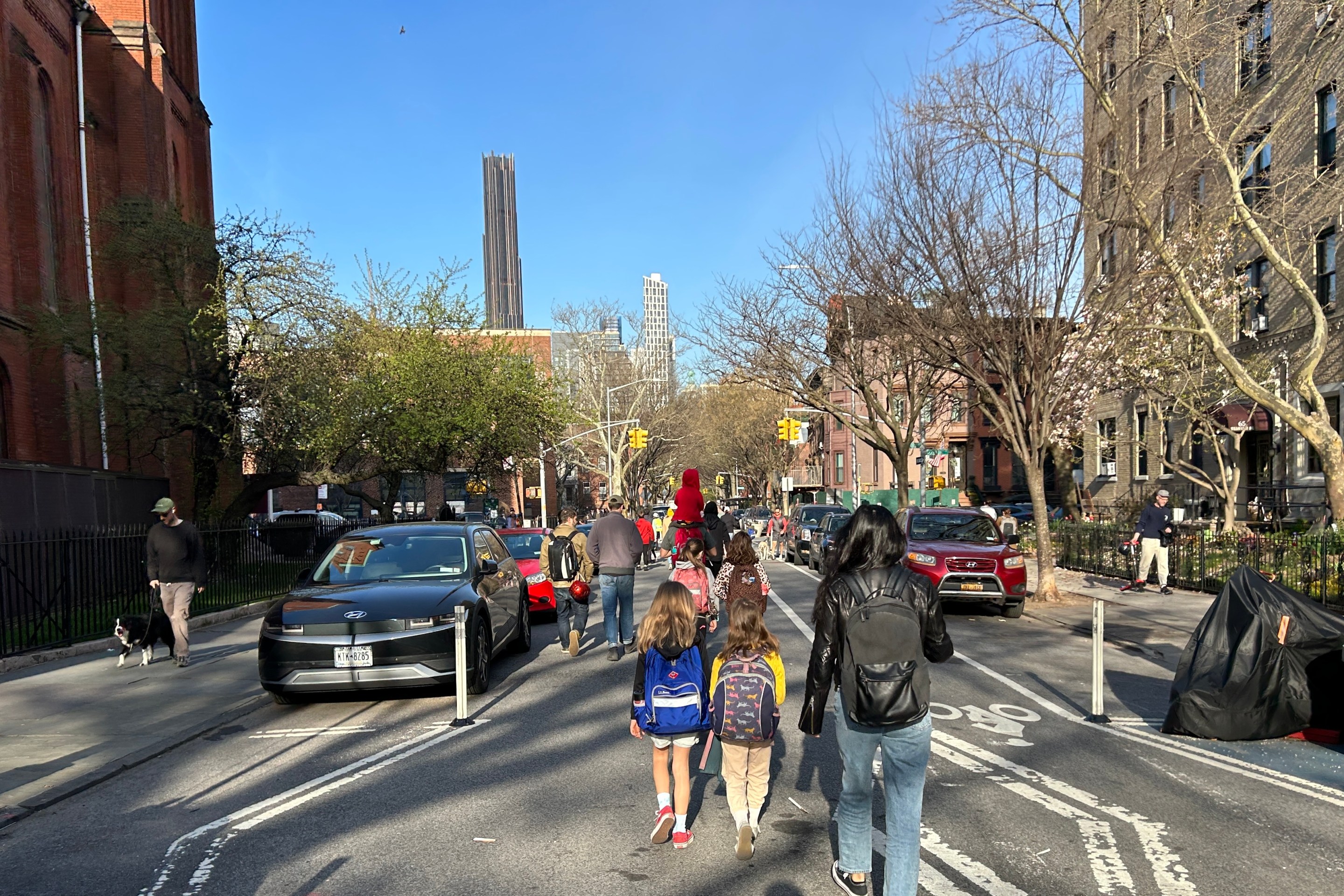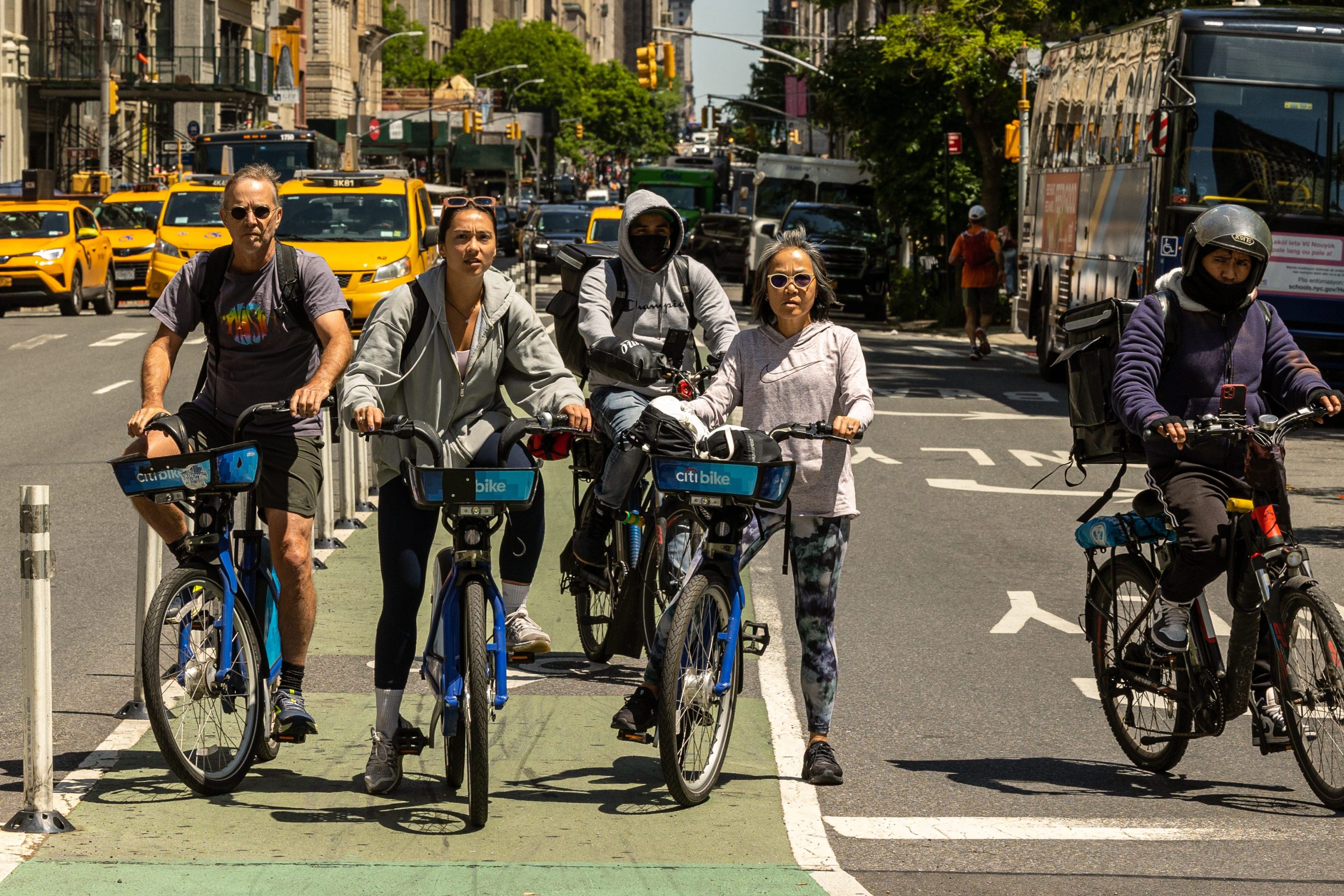Takeaways From This Week’s City Council Vision Zero Hearing
4:40 PM EDT on May 2, 2014
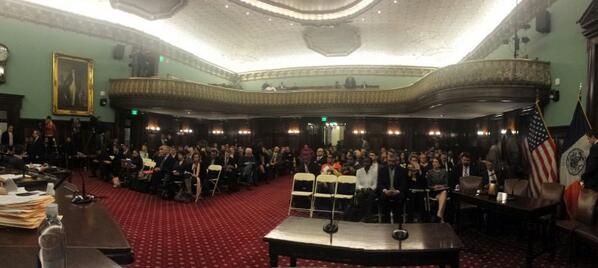
The office of Ydanis Rodriguez says he is aiming to get several traffic safety bills passed in the near future, while others that were taken up by his transportation committee at a Wednesday Vision Zero hearing may be held up.
At a press conference announcing the Broadway arterial slow zone Thursday, Rodriguez said of the 26 bills and eight resolutions: "Many of those bills already had the support of the administration. And other bills, there was some concern and issues, but we will continue having conversations."
A spokesperson for Rodriguez said his office could not say which bills may go forward and which may not, due to legal issues.
"We are looking to move quickly on a package of six to seven bills that were discussed [Wednesday] as they need only little to no adjustments," said Rodriguez spokesperson Russell Murphy. "While I won't put a definitive timeline on it, we'd like to see these bills aged in the next few months."
"We want to ensure the bills are comprehensive and complete and that we can pass through a number at the same time to bring about immediate action."
Testimony submitted by city officials Wednesday gives some idea as to which bills the de Blasio administration may, and may not, be ready to act on. Here's a summary.
- Susan Petito, NYPD assistant commissioner of intergovernmental affairs, said the department will soon begin releasing data on individual crashes on a "true Excel spreadsheet," rather than listing them by intersection in a PDF file, as has been done for several years. Regarding Intro 153, which would require the Department of Information Technology and Telecommunications to add traffic crashes and fatalities in an interactive NYPD crime map, Petito pointed out that the state form used by police uses the nearest cross street to site crashes. She asked the council to allow the department time to reconcile the requirements of the form with the goal of the bill, which is to map crashes by street address. Petito said NYPD would work with the council to ensure that the new data release format complies with data reporting laws.
- Responding to Council Member David Greenfield, Petito said it is "standard" for the Collision Investigation Squad to acquire the cell phone records of drivers involved in serious and fatal crashes. Since NYPD keeps crash investigation reports under lock and key, it's basically impossible to know how often this happens. The NYPD officer who hit and killed pedestrian Felix Coss in Williamsburg was reportedly on her cell phone, but she was not prosecuted.
- NYPD supports Intro 167, the proposed law against "stunt" motorcycle riding, Petito said. She said NYPD supports the goal of Intro 238, to raise the penalty for failure to yield to a pedestrian or cyclist, but said clarifications are needed.
- TLC Commissioner Meera Joshi said the agency is behind a package of bills that would increase penalties for cab drivers involved in serious and fatal crashes (outlined here) and require the TLC to report to the council on cab crashes and subsequent disciplinary actions. Joshi said the agency has issued RFIs for "black box" tech to be used for a pilot program to monitor cab driver behavior behind the wheel (as prescribed by the Vision Zero Action Plan). Joshi again talked up the driver "honor roll" concept, and said the TLC encourages cabbies to drive to through neighborhoods "as if their kids lived there." As part of its education program, Joshi said cabbies who "get in frequent crashes" may be required to take safe driving courses. "My goal is to raise the standard so that the TLC license is synonymous with safety."
- Another potentially significant item from Joshi's testimony: She told the council the TLC and NYPD are forming a special unit that will do targeted speed enforcement of TLC-licensed vehicles.
- A half-dozen or so cab driver reps testified against the TLC-related bills. Several said the council should abandon the effort to improve taxi safety in lieu of applying the same standards to all drivers. "We do not want to be singled out," said Bhairavi Desai of the New York Taxi Workers Alliance. Desai and others refused to acknowledge that TLC license holders are accountable to the public in a way that private motorists are not. Since increasing penalties for all drivers would require action from Albany, as well as cooperation from police, district attorneys, and the courts, it's clear that what the cab driver groups want is to maintain the status quo.
- Transportation Commissioner Polly Trottenberg said DOT supports Intro 198, to require all “tractors and trucks loading and unloading items within the city” to be equipped with side guards that help prevent people from being swept beneath them, but she said her agency and the Department of Citywide Administrative Services are in the process of studying truck side guards, for private trucks as well as the city fleet.
- Trottenberg suggested that DOT could incorporate a study on left turns and arterials (as would be required by Intro 43 and Intro 168, respectively) into its 2015 pedestrian safety study and action plan. Regarding Intro 46, to require DOT to keep a log of defective traffic signals and to inspect and/or repair broken signals within 24 hours, Trottenberg said it is DOT policy to repair "safety-critical" traffic signals within two hours, and asked that the council consult with DOT on current protocols before codifying new ones.
- DOT already follows federal, state, and agency guidelines for work zone safety, as proposed by Intro 80, Trottenberg said, though she said the agency is open to discussions on keeping them up to date.
- Trottenberg said one-way, one-lane streets, where the council wants to lower speed to 25 mph (Intro 140), are "among the least risky" in terms of safety, accounting for 35 percent of roadways and 16 percent of pedestrian fatalities. Trottenberg emphasized that DOT favors lowering speed limits, but said, "There are a number of legal and operational and enforcement issues that we still need to consider."
- Intro 140 would also require DOT to implement seven 20-mph Slow Zones and 50 20-mph school slow zones a year. Trottenberg said DOT currently plans to exceed those numbers -- 16 Slow Zones in the next two years and 50 school zones a year. However, she said, "I think we do have a concern that codifying such targets in perpetuity may not account for future traffic safety needs or shifting resource priorities."
Stay in touch
Sign up for our free newsletter
More from Streetsblog New York City
Car Crashes by City Workers Cost Taxpayers $180M in Payouts Last Year: Report
A record number of victims of crashes involving city employees in city-owned cars filed claims in fiscal year 2023 — and settlements with victims have jumped 23 percent, a new report shows.
Tuesday’s Headlines: Biking with a Dutchman Edition
You really get a fresh perspective on city cycling when you do it with someone from Holland. Plus other news.
City Urges Judge to Toss Anti-Open Streets Lawsuit
The city's not responsible for 24-7 car access to every street, officials argued.
Opinion: Connect the Dots of Manhattan’s Missing Bike Lanes
Only a few miles of missing protected lanes stand in the way of a robust bike network.
Monday’s Headlines: Thanking the Academy Edition
We would be remiss if we didn't offer some photos and copy about Friday's George Polk Awards ceremony, plus other news.
